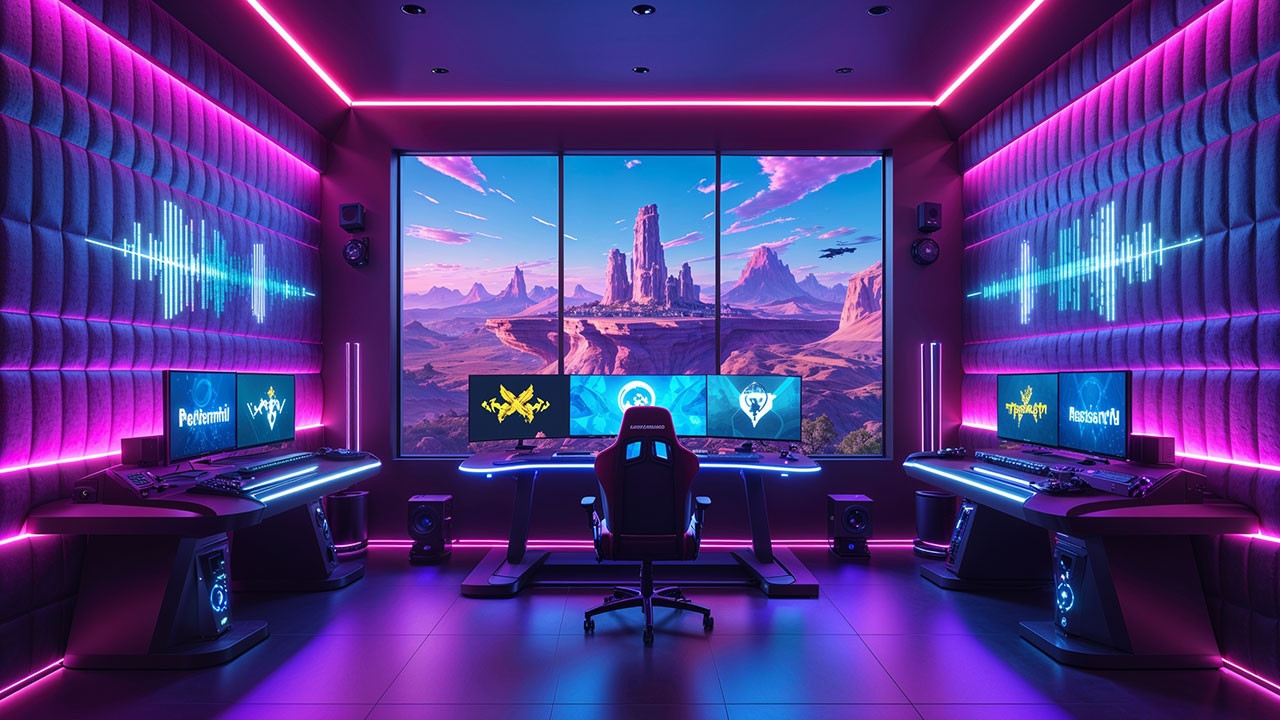Crafting the Perfect Soundproof Gaming Haven
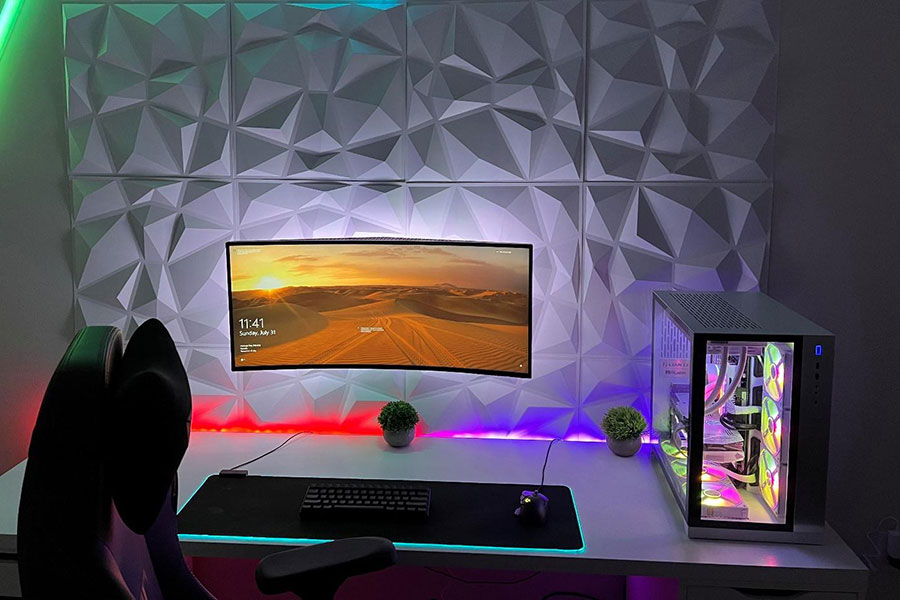
Imagine this: you’re deep into an intense battle in Call of Duty, the stakes are high, and victory seems within reach. Just as you’re about to make that game-winning move, the doorbell rings, and you’re jolted out of the zone. We’ve all been there, haven’t we? Whether it’s the neighbor’s lawn mower droning in the background or the echo of your voice bouncing off the walls, noise can be a gamer’s worst enemy. Today, let’s embark on a journey to transform your gaming room into a serene oasis, free from the cacophony of the outside world.
How to Soundproof Your Gaming Room
Creating a soundproof gaming room is more than just a luxury; it’s a necessity for those seeking an immersive experience. Noise issues are a reality for many gamers. From the clamor of traffic outside to the echo of hard surfaces inside, external noise and internal echoes can tarnish what should be a seamless gaming experience. For streamers, a soundproof room is invaluable. It enhances audio quality, allowing audiences to focus on your content rather than background distractions. Consider this—as much as 48% of professionals report increased productivity in quieter environments. Just imagine how this could translate to more engaging streams and focused gaming sessions.
Understanding Soundproofing Basics
Soundproofing isn’t merely about blocking noise; it’s an art that involves both sound absorption and isolation. But what’s the difference? Soundproofing focuses on preventing sound from entering or leaving your room, whereas sound absorption deals with reducing echoes within the space. Key concepts like sound transmission, noise reduction coefficient (NRC), and decibel levels play a crucial role here. It’s vital to understand the types of noise too—airborne noises, like voices and music, travel through the air, whereas impact noises, like footsteps, vibrate through structures. Recognizing these differences is the first step in tailoring your soundproofing approach.
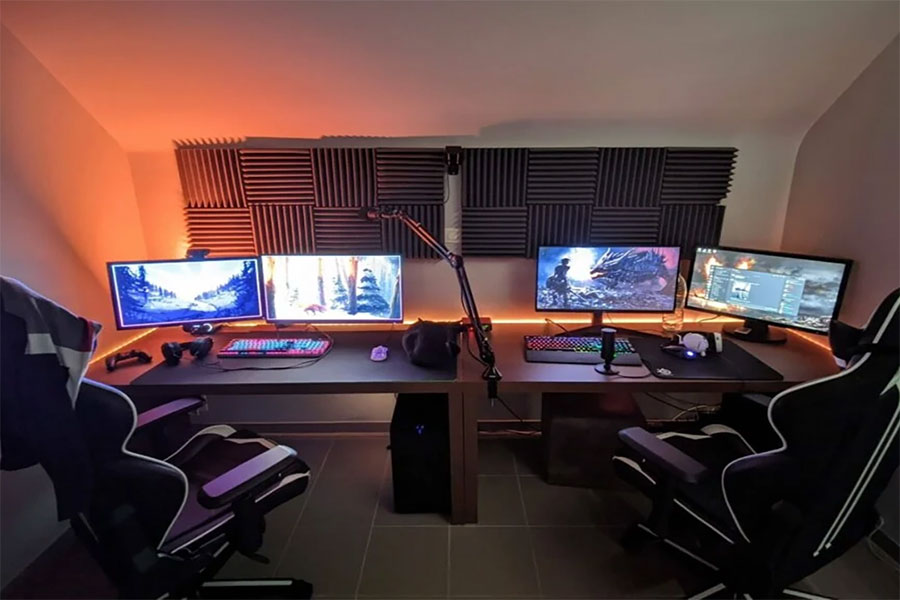
Step-by-Step Guide to Soundproof Your Gaming Room
1. Identify Noise Sources
To create an effective soundproofing plan, you first need to understand the noise challenges you’re dealing with. Take a moment to sit quietly in your gaming room with all your electronics off. Pay close attention—can you hear a constant hum from traffic in the distance or conversations from your neighbors slipping through the walls? Maybe it’s the low murmur of a washing machine or even the ticking of a clock that’s a little annoying. Recognizing these noise sources isn’t just about outside sounds; think about the internal noises, too, like the loud cheer after a big win that your neighbors might be hearing. Mapping out these sounds gives you a clear idea of where to concentrate your soundproofing efforts for the best results.
2. Seal Gaps and Cracks
Consider your room as a stronghold against unwanted noise, where any little cracks or gaps represent vulnerabilities in your defenses. Start by inspecting the doors and windows closely—channel your inner detective to spot any tiny openings that could be letting sound seep through. You can use weatherstripping to seal around the edges of doors and window frames, and for those smaller cracks, acoustic caulk works wonders. Don’t forget about adding door sweeps to block sound from sneaking in underneath. This step is crucial, as even the tiniest gaps can undermine your efforts to soundproof your space, allowing noise to sneak in or out without you even noticing.
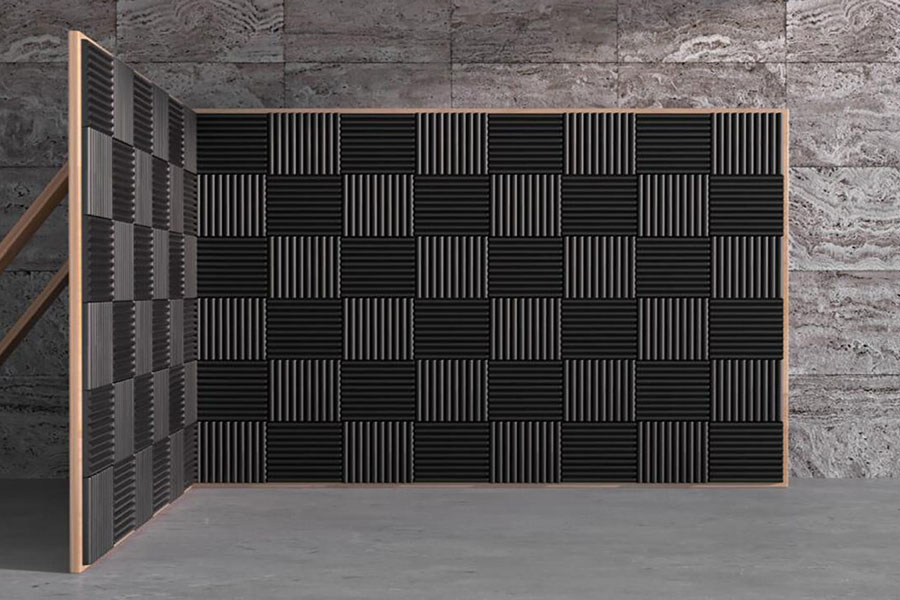
3. Add Mass to Walls
In soundproofing, mass is key. Sound waves weaken when they travel through heavier materials, so increasing the mass of your walls can make a big difference. Start with soundproof drywall, which is usually denser than regular drywall and offers a thicker shield against noise. Another excellent option is mass-loaded vinyl (MLV); this dense, flexible material is made specifically for reducing sound. If you want a two-for-one solution, consider acoustic panels. They not only block sound but also enhance the overall sound quality in your space.
4. Soundproof the Door
Doors, especially hollow-core ones, are notorious for letting sound in and out. Upgrading to a solid core door can drastically improve your room’s sound resistance. These doors are made of denser materials that better absorb and block sound waves. Once installed, enhance their effectiveness by applying adhesive door seals around the door frame. This combination creates a robust barrier, ensuring that your gaming sessions don’t disturb anyone else—and vice versa.
5. Soundproof Windows
Windows can be tricky; they are essentially open portals for sound. Acoustic curtains are a simple yet effective solution, as they are thicker than regular curtains and can help block noise. Window inserts, placed snugly within existing window frames, add a layer of glass specifically designed for sound reduction. For a more permanent solution, consider installing double-glazed windows, which have two layers of thick glass with an air gap between them, providing excellent acoustic insulation.
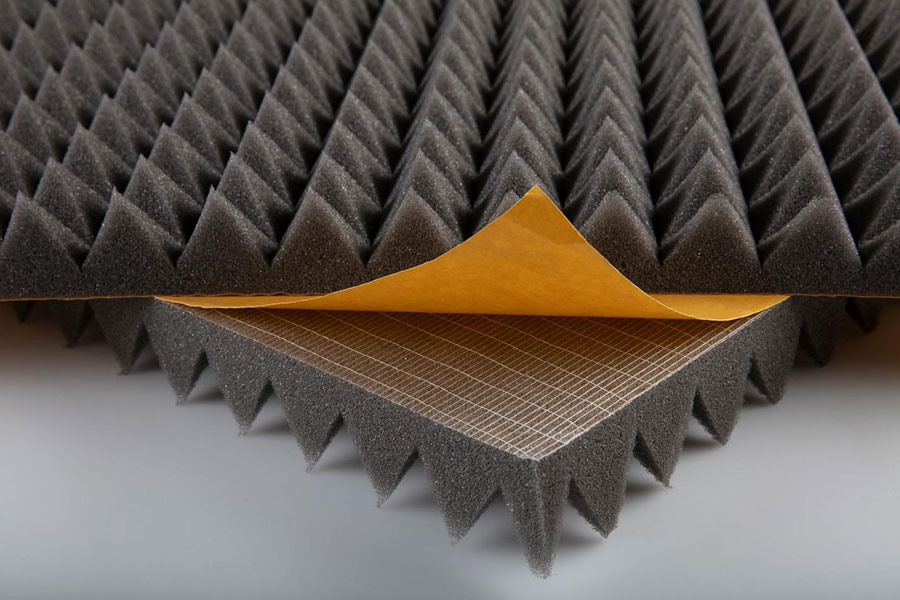
6. Install Acoustic Panels
Acoustic panels aren’t just there to make your walls look good; they play an essential role in controlling echoes and reducing noise in your space. By strategically placing them on the walls and even the ceiling, you can disrupt sound waves—whether that’s your voice, the sounds from your games, or any background noise coming in. The outcome? You’ll enjoy sharper, clearer audio for your gaming sessions and improved acoustics for any recordings or streaming you do from your setup.
7. Use Rugs and Carpets
Your floor can contribute significantly to sound issues, especially if it’s hardwood or tile. Placing thick rugs or carpets can absorb sound vibrations that otherwise bounce back into the room, especially impact noises from footsteps. This not only helps reduce noise levels but also adds a warm, comfortable aesthetic to your gaming environment.
8. Consider Soundproofing the Ceiling
Finally, the ceiling—often overlooked—can be a significant source of noise, especially in multi-story homes or apartments. Installing drop ceilings or acoustic tiles can provide a buffer that absorbs sound from above. These installations help create a sealed-off environment, effectively reducing noise ingress and egress from overhead, letting you game in peace even if the party’s going on upstairs.
By following these steps, we’re not just building a better gaming room; we’re creating a sanctuary free from the distractions of the outside world, allowing our digital adventures to be as immersive and uninterrupted as possible.
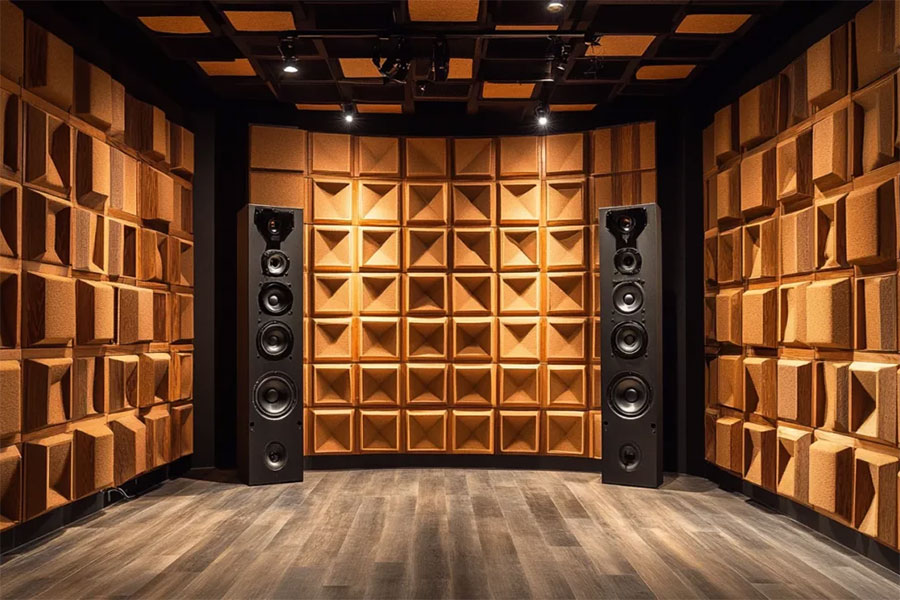
Budget-Friendly Soundproofing Solutions
Soundproofing doesn’t have to break the bank. DIY enthusiasts can find plenty of affordable solutions, like foam panels and draft stoppers, or use heavy curtains to curb noise. For the creative types, positioning bookshelves and large furniture strategically can help block sound as well.
- Affordable Options:
- Soundproofing doesn’t require a large financial outlay. Many effective techniques are inexpensive and accessible to DIY enthusiasts.
- Foam panels and draft stoppers are low-cost solutions that can significantly reduce noise.
- Heavy curtains can act as sound barriers, blocking out external noise and preventing sound from escaping the room.
- Creative Sound Barriers:
- Utilize existing furniture to your advantage.
- Bookshelves filled with books can serve as excellent sound barriers, helping to absorb noise.
- Large furniture pieces placed strategically against walls can dampen sound transmission, adding another layer of soundproofing passively.
Advanced Soundproofing Techniques
For those dipping their toes into professional solutions, consider soundproof insulation, resilient channels, and decoupling methods. Should you go this route, the decision between hiring a professional or pursuing a DIY path depends on the complexity of your soundproofing project and your level of expertise.
- Professional Methods:
- For those seeking more robust soundproofing, professional methods like soundproof insulation offer significant improvements in noise reduction.
- Resilient channels can decouple structures, effectively reducing sound transmission through walls and ceilings.
- Decoupling techniques involve creating layers of air or special materials within walls to disrupt sound waves, preventing them from traveling through.
- DIY vs. Professional:
- Deciding whether to hire a professional or pursue soundproofing as a DIY project involves assessing your project’s complexity and your skill level.
- Professional installations often provide superior results but at a higher cost.
- DIY projects can be highly rewarding and more economical if you have the necessary skills and time to invest.
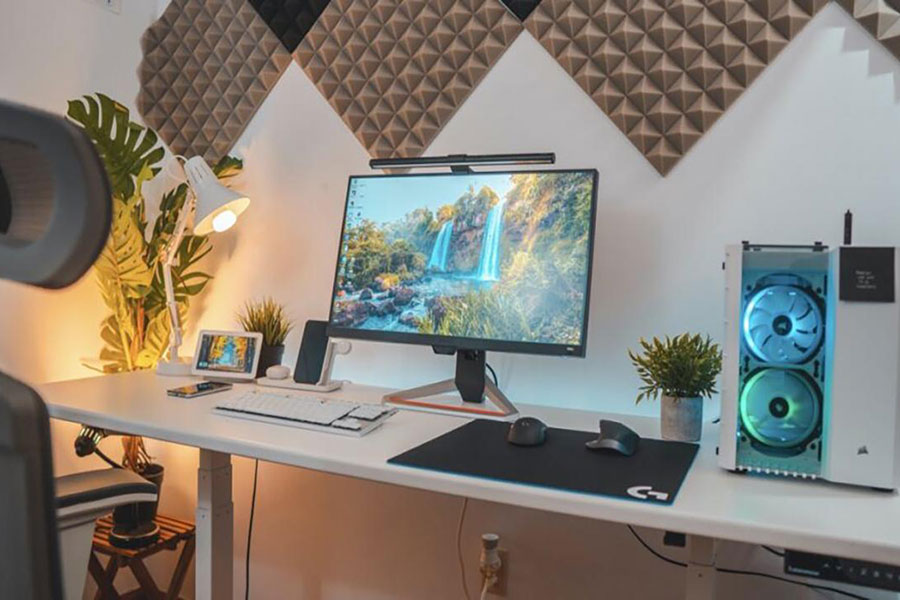
Product Recommendations
To get you started, here are some top-notch products to consider: acoustic panels from Auralex, soundproof curtains by Nicetown, and door seals from Suptikes. These products are highly rated and known for their effectiveness in creating quiet spaces.
- Top Products:
- Acoustic Panels: Look for panels from Auralex, which are highly regarded for their sound-absorbing capabilities and acoustic enhancement.
- Soundproof Curtains: Nicetown offers effective curtains designed specifically to block sound, providing an easy-to-install solution for windows.
- Door Seals: Suptikes door seals are popular for effectively blocking sound leakage around doors, making them a practical addition to any soundproofing plan.
- Effectiveness and Ratings:
- These products have proven track records, backed by positive reviews and user testimonials for their effectiveness in minimizing noise.
- Investing in quality soundproofing products can greatly enhance the quietness and serenity of your gaming environment.
Maintenance Tips for a Soundproof Gaming Room
Your journey doesn’t end with installation. Regular maintenance of soundproofing materials is crucial for ensuring long-term effectiveness. Check for any new gaps, wear, or damage, and address these promptly to keep your gaming sanctuary undisturbed.
- Routine Inspections:
- Regularly inspect all soundproofing materials for signs of wear and tear. This includes looking at acoustic panels, curtains, and door seals to ensure they remain securely attached and free from damage.
- Check for any new gaps or cracks that may have formed over time in walls, around windows, and doors as these could permit sound leakage.
- Prompt Repairs:
- Address any vulnerabilities immediately. Small gaps or compromised seals can significantly undermine your soundproofing efforts, allowing unwanted noise to seep through.
- Use acoustic caulk to reseal any cracks, and replace worn-out weatherstripping or door seals as needed to maintain a tight sound barrier.
- Product Updates:
- Stay updated with new soundproofing technologies or products that might offer better performance than your current setup. Replacement or upgrading parts can sometimes provide improved soundproofing solutions.
- Consider periodic upgrades to elements like acoustic panels, as newer iterations often offer enhanced sound absorption properties.
- Environmental Adjustments:
- Keep your gaming environment dry and mold-free, as humidity can affect the performance of materials like foam panels and curtains. Consider using a dehumidifier if necessary.
- Ensure ventilation systems do not compromise your soundproofing efforts, and install noise-reducing vents if needed.
- Cleaning and Care:
- Clean acoustic panels and curtains as per product instructions to prevent dust build-up, which can affect their acoustic properties.
- Ensure your room remains clutter-free to avoid any potential noise from vibrating objects, which can disrupt your gaming experience.
Implementing these maintenance strategies will help preserve the integrity of your soundproofing efforts, ensuring that your gaming room remains a peaceful and immersive retreat.
Conclusion
Experience from ordinary to extraordinary by knowing how to soundproof your gaming room. Let’s remember, that we don’t just play games; we embark on epic adventures in virtual realms. Here’s to quieter spaces and more immersive gaming sessions.
What are the best materials for DIY soundproofing?
DIY enthusiasts often turn to materials like mass-loaded vinyl, acoustic foam panels, and thick rugs. These are cost-effective and relatively easy to install, providing substantial noise reduction with minimal investment.
Can soundproofing affect ventilation in my gaming room?
Yes, it’s possible. When sealing gaps to soundproof a room, ventilation can sometimes be compromised. Consider installing acoustic vents that allow air to flow while maintaining noise reduction.
Is there a difference between soundproofing and acoustics?
Absolutely. Soundproofing is about blocking external noise, whereas acoustics improves the quality of sound inside a room. Both are important for a gaming room, but they address different issues.
